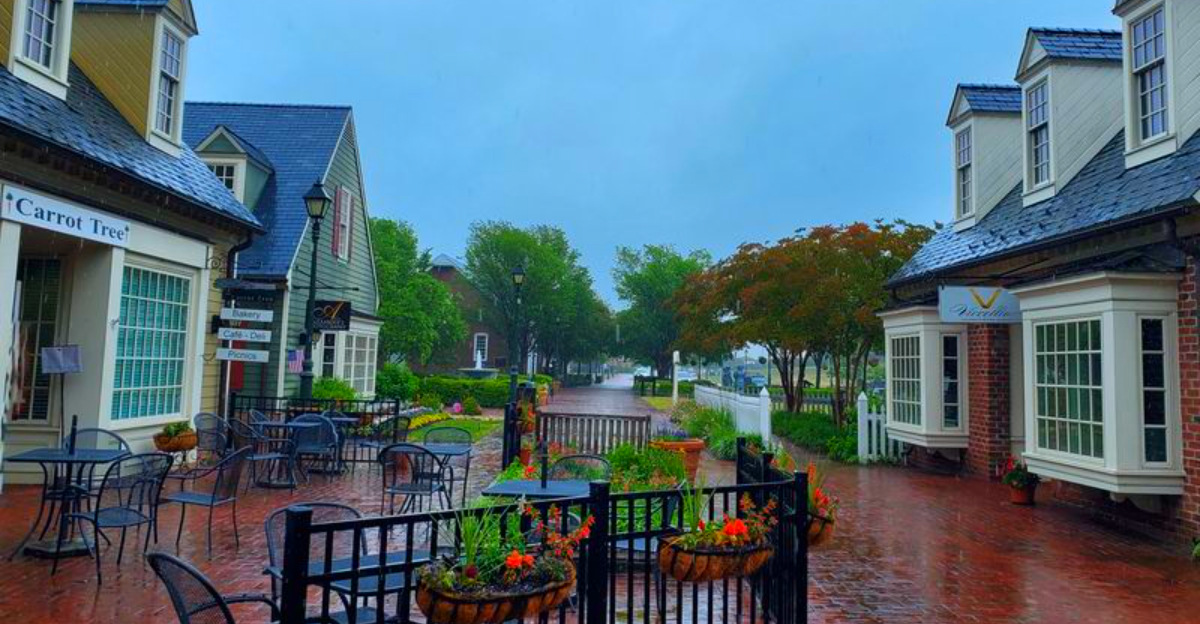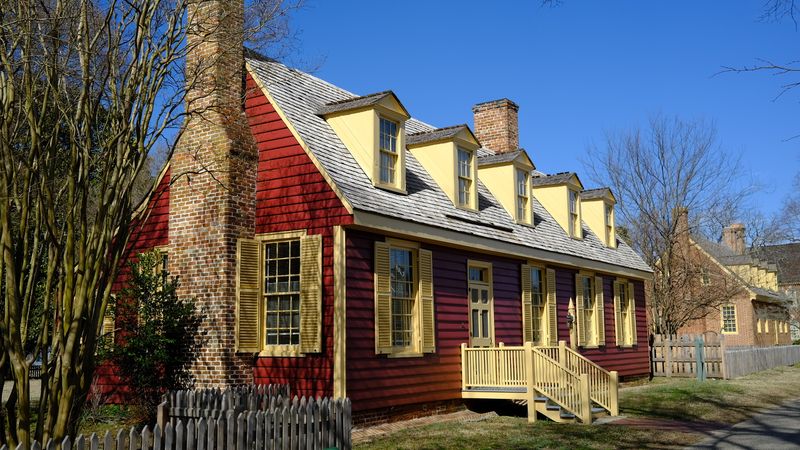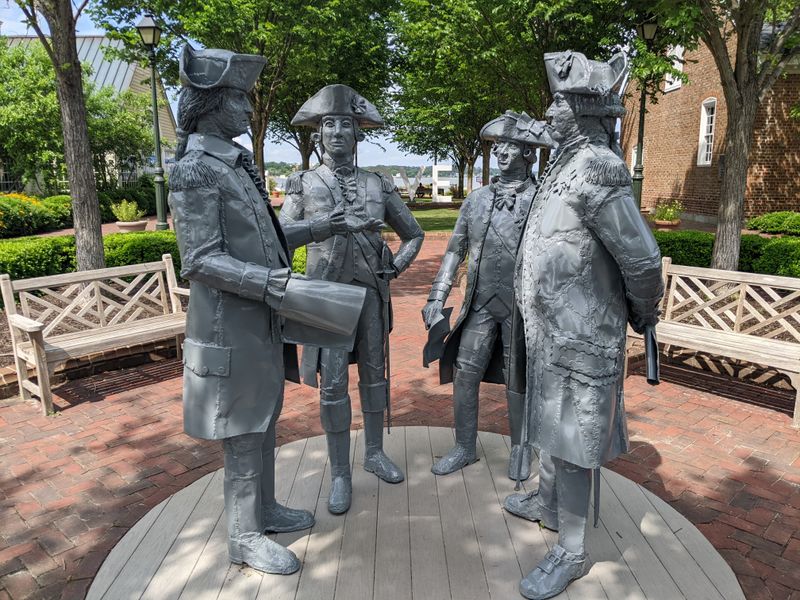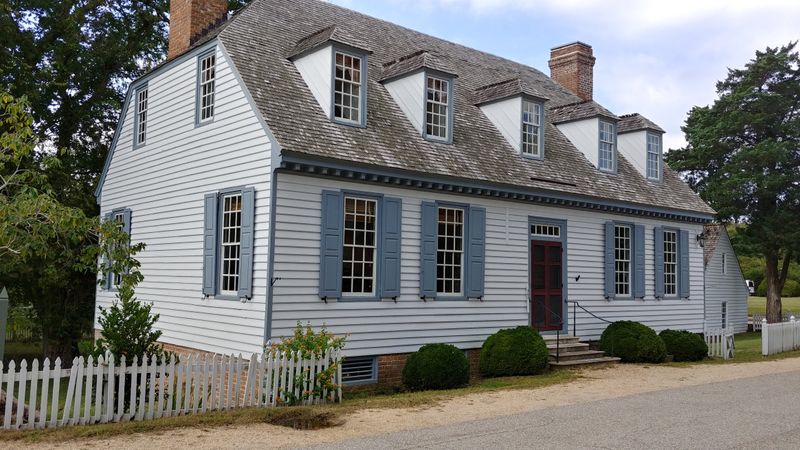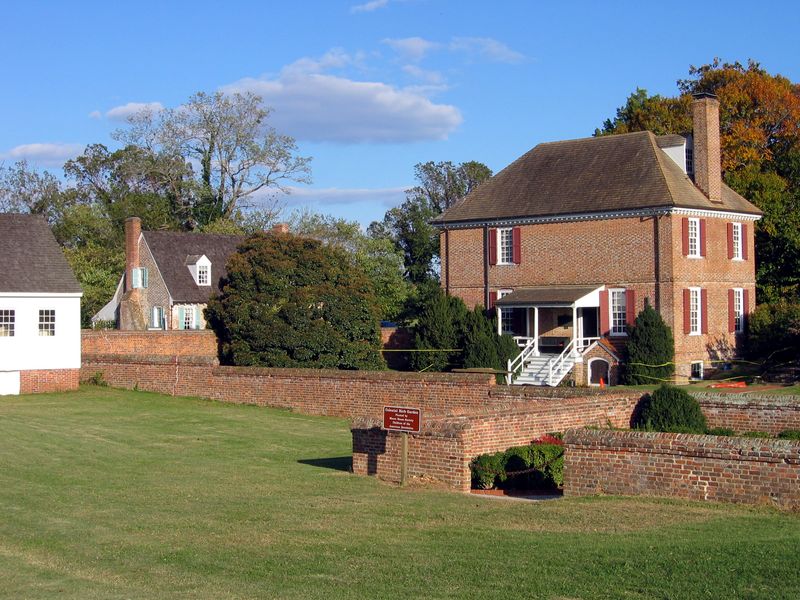Tucked along the quiet, shimmering York River, Yorktown feels like a living chapter from early America. As autumn deepens, candlelit streets, brick lanes, and colonial rooftops turn the town into a glowing Thanksgiving postcard. If you’re craving a cozy getaway with hearth-warm taverns, lantern tours, and crisp river breezes, this tiny gem delivers time-travel magic. Ready to slow down, breathe in the spice of fall, and wander where history still whispers?
1. Its Colonial Streets Look Exactly Like an Old Thanksgiving Painting
In late November, Yorktown’s historic core resembles an oil painting come to life. Brick paths curve past 18th-century houses trimmed with white picket fences and copper lanterns that flicker at dusk. The air smells faintly of woodsmoke, and leaves rustle across worn thresholds. Every corner frames a postcard view – gable roofs, holly wreaths, and frost-tipped gardens. Even the quiet feels historic, like a pause between carriage wheels. As sunlight softens, windows glow with hearthlight, casting warm rectangles onto brick. You can almost hear quills scratching letters and kettles simmering. It’s not staged nostalgia – it’s the town simply being itself.
2. The Town’s Small Size Makes It Feel Extra Cozy
Yorktown’s petite footprint wraps you in coziness from the first step. With a population of only a few thousand, the rhythms are gentle: shopkeepers chat on stoops, neighbors wave across fences, and footsteps echo softly on brick. There’s no rush here – just time for a second mug of cider and another walk along the bluff. During Thanksgiving season, the calm feels intentional, like turning down the volume on life. You notice creaking doors, crisp leaves, and the satisfying crunch of gravel lanes. The town’s scale invites lingering, and its quiet streets feel safe, welcoming, and wonderfully human.
3. You Can Walk the Same Roads Early Americans Traveled
Yorktown’s layout preserves the paths that early Americans truly walked. In late autumn, when leaves crackle underfoot, the sense of continuity is striking. You’ll trace routes that once carried soldiers, merchants, and messengers – a lived-in map of the Revolutionary era. Interpretive signs and weathered fences add quiet context as the wind lifts the river’s briny scent. With each block, you feel tethered to a story larger than yourself. It’s history you don’t just read; you inhabit. The streets hold memory, and November’s hush lets you hear it—footfalls, murmured plans, the rustle of uniforms against canvas coats.
4. Festive Markets Bring Classic Holiday Traditions to Life
As Thanksgiving nears, Yorktown’s markets feel like stepping into a storybook square. Under tidy tents, artisans display hand-dipped candles, glazed pottery, woven baskets, and spiced sweets. The air carries cinnamon, pine, and the happy hum of neighbors catching up. It’s shopping slowed to a meaningful pace – where you learn the maker’s name, touch the grain of wood, and pick gifts with purpose. Lanterns flick on as the river darkens, and music drifts between stalls. You’ll leave with treasures and traditions, not just purchases. It’s a simple, satisfying ritual that warms the heart long after the bags are unpacked.
5. Candlelight and Lantern Tours Feel Like Stepping Into the Past
After sunset, Yorktown’s stories come alive by lantern light. Guides in colonial dress lead small groups through narrow lanes, lanterns swinging like tiny suns. Shadows ripple across clapboard and brick while voices drop to a reverent hush. Without car noise or glare, details sharpen: the scrape of boots, the glow in windowpanes, the pleasant chill of river air. You’re not just observing – you’re participating, moving through time at a human pace. Each stop unveils a vignette of daily life and wartime resilience. By tour’s end, modern distractions have faded, and the past feels present, warm, and near.
6. The Riverfront Turns Into a Cozy Autumn Postcard
Down by the York River, November wraps the shoreline in gentle color and calm. The pier creaks softly; gulls wheel and settle; sails rustle like pages turned. Along the Colonial Parkway, maples and oaks erupt in gold, amber, and russet, their reflections rippling on the water. It’s the perfect place to stroll hand-in-hand, fingers curled around something warm. With each breath, you taste salt and woodsmoke – a bracing, comforting blend. The scene is simple, almost humble, and that’s its power. It invites you to linger, notice, and carry the stillness home like a carefully kept secret.
7. Historic Taverns Offer Old-Fashioned Comfort Food
Settle into a creaky wooden chair and let the hearth’s glow do its quiet work. Yorktown’s tavern fare leans hearty: roasted meats, buttered root vegetables, skillet cornbread, and pies fragrant with spice. Pewter gleams alongside crockery, and servers move with practiced ease through candlelit rooms. The flavors feel right for the season – comforting, rustic, and tied to the land. Conversations soften to a murmur while the fire snaps and pops. It’s more than a meal; it’s a warm pause in a brisk day, an edible memory stitched with gratitude and the timeless pleasure of good company.
8. Reenactments Bring Early American Life to Your Visit
In Yorktown, history doesn’t sit behind glass – it breathes. Even outside big commemorations, interpreters often demonstrate skills from daily colonial life. You might watch iron bloom at a forge, taste ash-baked bread, or see a soldier’s drill crack across the green. Each demonstration layers texture onto the town’s story: the hiss of quenching, the fragrance of stew, the measured cadence of commands. Children lean in; adults ask earnest questions. It’s learning by immersion, equal parts spectacle and scholarship. The result is empathy – an understanding of the hands, heat, hunger, and hope that shaped early American days.
